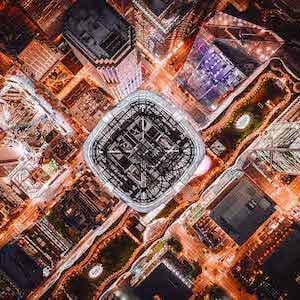What Are Scrum Artifacts?
What Are Scrum Artifacts?
As our technology systems and projects continue to evolve in both size and complexity, scrum meetings and agile methodology have become an integral part of many company’s development processes. Scrum meetings are a great way for team members to collaborate and ensure all projects and tasks in the queue are being moved forward and completed in a timely manner to meet company goals and ensure the best possible experience for their users.
When planning scrum meetings, it is important to consider all key information regarding each product in development, as well as all activities being planned and worked on within these projects.These key pieces of information are known as scrum artifacts.
Scrum artifacts are necessary for providing all Scrum Team members and stakeholders with a clear understanding of the development queue and how specific items are progressing and being completed. These scrum artifacts can be used to define production goals and determine whether these are being met, set clear direction to guide team members, and analyze project progress over a given period of time.
What are the Different Scrum Artifacts to Monitor?
There are several different scrum artifacts that can be monitored to help guide your scrum team and inform stakeholders about how different products are progressing within the development queue. The most common include the following scrum artifacts:
Product Vision
The product vision is used to define the overall vision and long-term goal of a given project or product. All scrum team members should memorize and have a clear understanding of the product vision, so be sure to keep this as clear and concise as possible.
For example, Spotify defines it’s product vision as “to unlock the potential of human creativity – by giving a million creative artists the opportunity to live off their art, and billions of fans the opportunity to enjoy and be inspired by it.”
Sprint Goal
A sprint goal is a specific objective that helps focus a given sprint. Sprints are short blocks of time during which a scrum team member works (or sprints) to complete a given chunk of work. The sprint goal should set clear objectives for all sprints and provide the developer with guidance as to the importance of each increment in relation to the full project or product.
Product Backlog
The product backlog is the complete list of all items and requirements for a given product. This list should contain every change (features, functionality, updates, fixes, etc.) needed for future releases.
Sprint Backlog
The sprint backlog is a smaller list of items/tasks taken from the complete product backlog that are needed for a specific increment and sprint goal. As these sprint backlogs are completed within the full product backlog, the development team then turns these into “done” increments.
Definition of Done (DOD)
The Definition of Done, or DOD for short, is a clearly defined set of rules or acceptance criteria that must be met before an item can be declared done. All scrum members must follow the same DOD to ensure quality is kept consistent throughout and in line with company goals.
Increment
An increment contains all product backlog items that were completed during a sprint. As sprints are completed, the new increment should be marked “done” based on the DOD.
Burndown Chart
A burndown chart is a graph that shows how a specific project is progressing overtime. The chart gradually “burns down” to zero as individual tasks are completed and marked done.
While these are the most popular scrum artifacts, there are many others that can be used to customize your scrum to meet the unique goals and needs of your company.
What is a Scrum Ceremony?
A scrum ceremony (also referred to as a scrum event) is a meeting held between scrum team members in order to plan and guide the product development lifecycle. Scrum ceremonies should be designed to help simplify the bigger picture and ensure all team members are on the same page throughout production.
There are five primary scrum ceremonies, including:
- Sprint Planning
- Daily Stand-Up or Scrum
- The Sprint (though this is not technically a meeting, the sprint is often considered to be a scrum ceremony or event itself)
- Sprint/Iteration Review
- Retrospective
Scrum ceremonies are typically led by the Scrum Master, although different ceremonies may include different team members as attendees based on what is being discussed. The goal of these ceremonies is to keep all team members in sync to ensure all work is progressing as planned.
Why Scrum Artifacts are Important
Without carefully monitoring scrum artifacts, it can be extremely difficult to effectively manage workflow and ensure quality within an agile development framework. Scrum artifacts are critical for helping teams plan all work and future goals, set consistent expectations for all team members to work toward, organize sprints to push products forward smoothly and effectively, and ensure stakeholders and users are being kept happy.

Additional
Resources

Webinar
New Best Practices for Designing Self-Service Automation for IT Processes

Webinar
Modernizing Incident Response: Quicker Resolution and Fewer Escalations